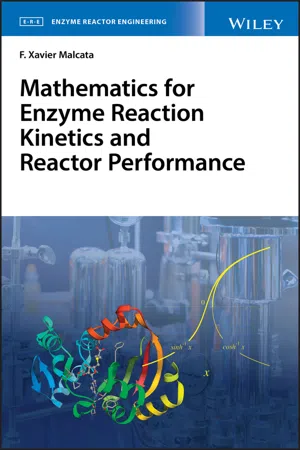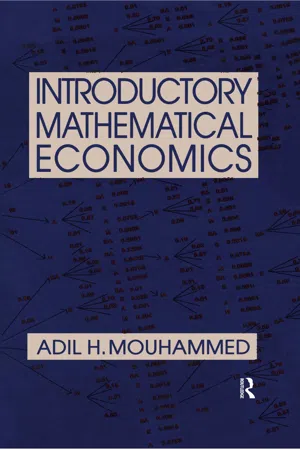Technology & Engineering
Partial Derivative
A partial derivative measures how a function changes with respect to one of its variables while holding the other variables constant. In technology and engineering, partial derivatives are used to analyze how a system or process changes in response to specific inputs, making them valuable for understanding complex systems and optimizing designs.
Written by Perlego with AI-assistance
Related key terms
Related key terms
1 of 4
Related key terms
1 of 3
4 Key excerpts on "Partial Derivative"
- F. Xavier Malcata(Author)
- 2020(Publication Date)
- Wiley(Publisher)
10 Differentials, Derivatives, and Partial DerivativesThe concept of differential entails a small (tendentially negligible) variation in a variable x, denoted as dx, or a function f {x}, denoted as df {x}; the associated derivative of f {x} with regard to x is nothing but the ratio of said differentials, i.e. df/dx – usually known as Leibnitz’s formulation.In the case of a bivariate function, say, f {x,y}, differentials can be defined for both independent variables, i.e. dx and dy – so Partial Derivatives will similarly arise, i.e. ∂f/∂x and ∂f/∂y; operator ∂ is equivalent to operator d, except that its use is exclusive to multivariate functions – in that it stresses existence of more than one independent variable.10.1 Differential
In calculus, the differential represents the principal part of the change of a function y = f{x} – and its definition reads(10.1)where df/dx denotes the derivative of f {x} with regard to x; it is normally finite, rather than infinitesimal or infinite – yet the precise meaning of variables dx and df depends on the context of application, and the required level of mathematical accuracy.The concept of differential was indeed introduced via an intuitive (or heuristic) definition by Gottfried W. Leibnitz, a German polymath and philosopher of the eighteenth century; its use was widely criticized until Cauchy defined it based on the derivative – which took the central role thereafter, and left dy free for given dx and df/dx as per Eq. (10.1) . A graphical representation of differential is conveyed by Fig. 10.1 , and the usefulness of differentials to approximate a function becomes clear from inspection thereof; after viewing dy as a small variation in the vertical direction, viz.(10.2)one may retrieve Eq. (10.1)- eBook - ePub
- Frank J. Fabozzi, Frank J. Fabozzi(Authors)
- 2012(Publication Date)
- Wiley(Publisher)
Differential Equations SERGIO M. FOCARDI, PhD Partner, The Intertek Group FRANK J. FABOZZI, PhD, CFA, CPA Professor of Finance, EDHEC Business SchoolAbstract: In financial modeling, the goal is to be able to represent the problem at hand as a mathematical function. In a mathematical function, the dependent variable depends on one or more variables that are referred to as independent variables. In standard calculus, there are two basic operations with mathematical functions: differentiation and integration. The differentiation operation leads to derivatives. When a mathematical function has only one independent variable, then the derivative is referred to as an ordinary derivative. Typically in financial applications, the independent variable is time. The derivative of a mathematical function that has more than one independent variable (one of which is typically time) is called a Partial Derivative. A differential equation is an equation that contains derivatives. When it contains only an ordinary derivative, it is referred to as an ordinary differential equation; when the differential equation contains Partial Derivatives, the differential equation is called a partial differential equation.In nontechnical terms, differential equations are equations that express a relationship between a function and one or more derivatives (or differentials) of that function. The highest order of derivatives included in a differential equation is referred to as its order . In financial modeling, differential equations are used to specify the laws governing the evolution of price distributions, deriving solutions to simple and complex options, and estimating term structure models. In most applications in finance, only first- and second-order differential equations are found.Differential equations are classified as ordinary differential equations and partial differential equations depending on the type of derivatives included in the differential equation. When there is only an ordinary derivative (i.e., a derivative of a mathematical function with only one independent variable), the differential equation is called an ordinary differential equation . For differential equations where there are Partial Derivatives (i.e., a derivative of a mathematical function with more than one independent variable), then the differential equation is called a partial differential equation . Typically in differential equations, one of the independent variables is time. A differential equation may have a derivative of a mathematical function where one or more of the independent variables is a random variable or a stochastic process. In such instances, the differential equation is referred to as a stochastic differential equation - eBook - ePub
- Adil H. Mouhammed(Author)
- 2020(Publication Date)
- Routledge(Publisher)
n ).Example 1: Differentiate y = 3x1 x2 partially with respect to x1 and x2 .Solution: This function can be expressed as y = 3x1 x2 = f(x1 , x2 ); hence,∂ f / ∂andx 1=f= 3x 1x 2∂ f / ∂x 2=f= 3x 2x 1,where fx1 means the Partial Derivative of the function with respect to x, holding x2 constant, and fx2 indicates the Partial Derivative of the function with respect to x2 holding x, constant. As one can see, the same rules of differentiation are used.Example 2: Differentiate y = 4x1 2 x2 3 partially with respect to x1 and x2 .Solution: ∂f/∂x1 = fx1 = 8x1 x2 3 and ∂f/∂x2 = fx2 = 12x1 2 x2 2 .Example 3: Differentiate the function y = x1 2 + x2 2 partially with respect to x1 and x2 .Solution: ∂f/∂x1 = fx1 = 2x1 , and ∂f/∂x2 = fx2 = 2x2 .Example 4: Differentiate the function Z = 3xy2 + y3 − 3x2 partially with respect to x and y.Solution: ∂Z/∂x = Zx = 3y2 − 6x and ∂Z/∂y = Zy = 6xy + 3y2 .Example 5: The Production Function. Production function shows the relationship between factors of production and output level. One form of the production functions is called Cobb-Douglas production function. Suppose this function takes the following form:Q = 4L0. 3K0. 7where Q, L, and K are the output level, units of labor, and units of capital, respectively. For such a function, researchers are interested in finding the marginal products of labor and capital as well as the elasticities. The marginal products are the Partial Derivatives of output with respect to labor (Q1 ) and capital (Qk ). Hence,∂ Q / - eBook - ePub
- Arsen Melkumian(Author)
- 2012(Publication Date)
- Routledge(Publisher)
4 Limits and derivativesIn mathematics, differential calculus is a subfield of calculus that is concerned with the study of how quickly functions change over time. The primary concept in differential calculus is the derivative function. The derivative allows us to find the rate of change of economic variables over time.This chapter introduces the concept of a derivative and lays out the most important rules of differentiation. To properly introduce derivatives, one needs to consider the idea of a limit. We cover the concept of a limit in the first section. The chapter closes with growth rates of discrete and continuous variables.4.1 LimitsConsider a function g given byand shown in Figure 4.1 . Clearly, the function is undefined for x = 0, since anything divided by zero is undefined. However, we can still ask what happens to g(x) when x is slightly above or below zero. Using a calculator we can find the values of g(x) in the neighborhood of x = 0, as shown in Table 4.1 .As x approaches zero, g(x) takes values closer and closer to 2. So we can say that g(x) tends to 2 as x tends to zero. We writeand say that the limit of g(x) as x approaches zero is equal to 2.Now that the idea of a limit is clear on an intuitive level, let us consider a formal definition of the right- and left-hand side limits.Let f be a function defined on some open interval (a, b). We say that L is the right-hand side limit of f (x) as x approaches a from the right and writeif for every ε > 0 there is a δ > 0 such thatFigure 4.1whenever As an example, let us consider the following function We want to show that Let us choose ε > 0. We need to show that there is a δ > 0 such that wheneverTable 4.1Let us choose δ = (ε/2). Then,and therefore It follows immediately that whenever Now we have proved that the limit ofas x approaches zero from the right is equal to 1.Now let us define a left-hand side limit. Let f be a function defined on some open interval (a, b). We say that L is the left-hand limit of f (x) as x approaches b
Index pages curate the most relevant extracts from our library of academic textbooks. They’ve been created using an in-house natural language model (NLM), each adding context and meaning to key research topics.
Explore more topic indexes
Explore more topic indexes
1 of 6
Explore more topic indexes
1 of 4



